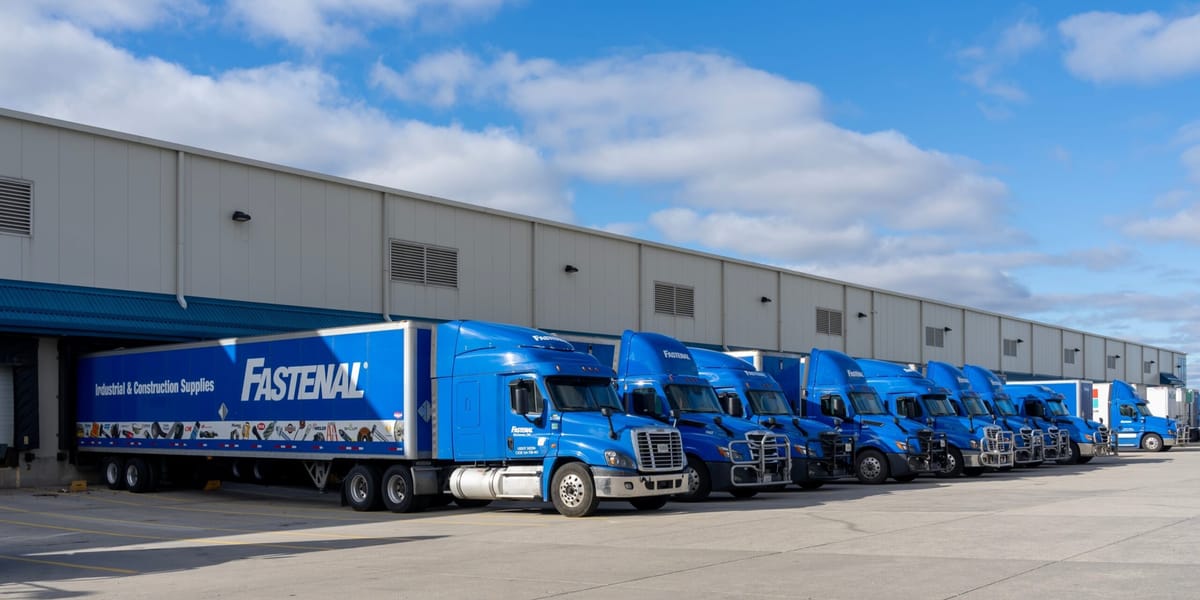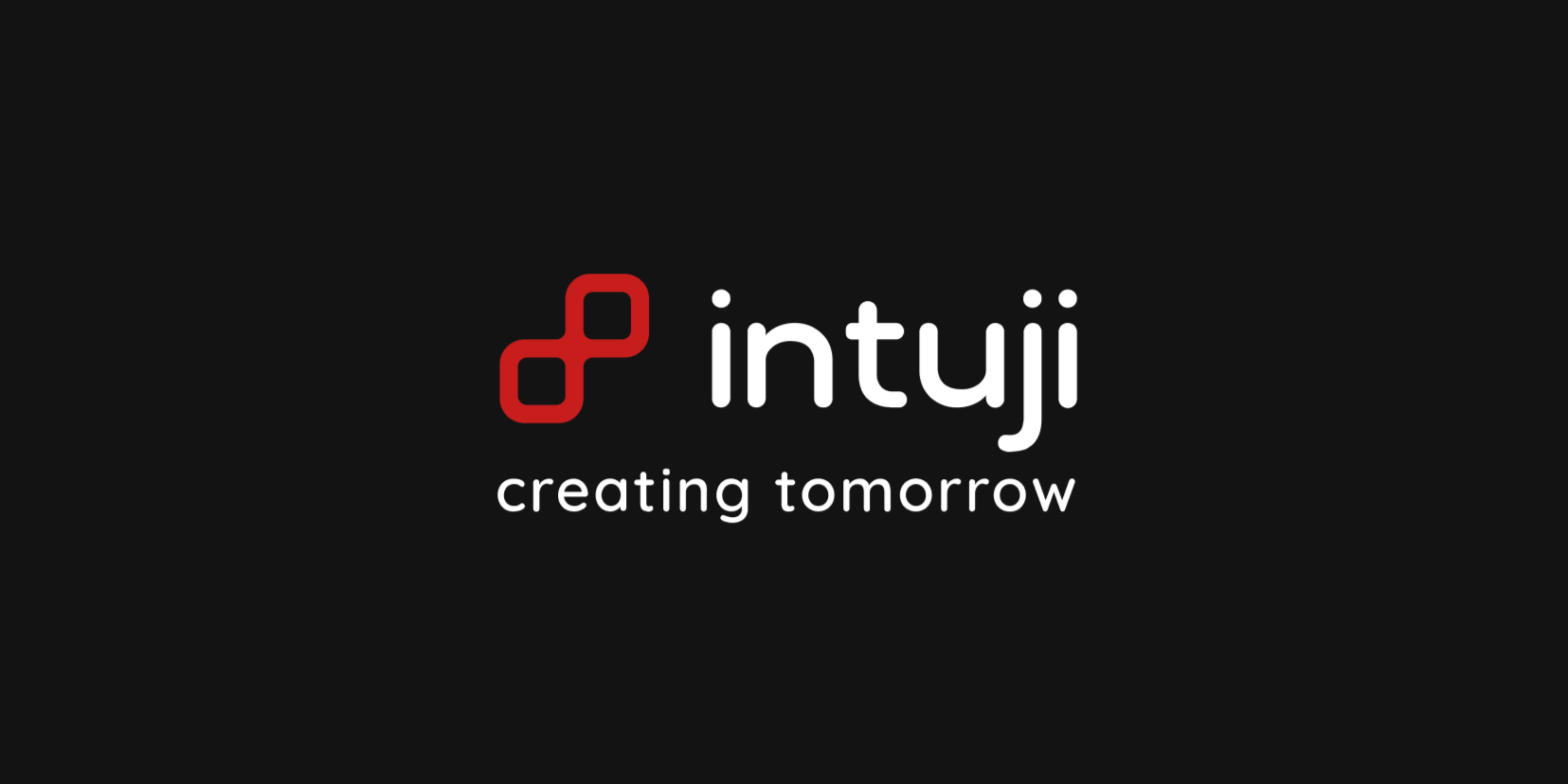The Blueprint Behind Fastenal’s $15B+ Digital Transformation

In the last decade, Fastenal has quietly executed one of the most impressive digital transformations in B2B distribution.
Fastenal is a U.S.-based industrial distributor supplying fasteners, tools, and safety products. Founded in 1967, it has grown into a global leader by combining local service with digital systems that automate procurement and streamline supply chains.
I have followed the company for a long time. In the tech and customer-experience space, their strategy is a masterclass in leveraging digital channels to win significant market share and lock in customer loyalty. One day, I hope to tour some of their facilities. I am sure we can make it happen.
The results speak for themselves: by Q3 2025, 61.3% of Fastenal’s sales (USD $1.305 billion) came through what the company calls its “digital footprint” – a blend of online e-business and automated tech-enabled inventory systems.

In absolute terms, Fastenal’s Q3 2025 sales hit $2.13 billion USD (up 11.7% year-over-year) with net income of $335.5 million USD (+12.6%). Those gains were driven largely by customers migrating spend into Fastenal’s tech-enabled channels.
Fastenal’s approach has been high-tech but still “high-touch”. It didn’t simply cut costs via a bare-bones e-commerce portal. Instead, over time, they have built out an incredibly strong integrated ecosystem.
Fastenal’s e-commerce and e-procurement platforms alone now account for roughly 29–30% of total revenue. To put that in context, in 2017, e-commerce was only 5.5% of sales!
That five-fold increase in web-driven sales wasn’t accidental. Fastenal has invested in user-friendly online ordering, system integrations (like EDI and procurement portals), and data analytics to make digital buying seamless for customers. The firm even announced a 2026 relaunch of Fastenal.com to further accelerate online growth.
Meanwhile, Fastenal’s FMI program (Fastenal Managed Inventory) – which includes SMART vending machines (FASTVend®), RFID bins (FASTBin®), and other automated restock solutions – accounts for another ~45% of sales. These are the blue industrial “vending machines” you see on factory floors (pictured below). They automatically reorder when stock is low, creating a 24/7 self-service experience for plant managers. This is exactly what we call an EdgeFactor® at Intuji.
In Q3 2025 alone, sales through FMI tech grew 18% year-over-year. Fastenal was installing roughly 110 new devices per day, bringing the global installed base to ~134,000 units. Those machines aren’t just convenient, they’re sticky and keep customers around.
We see that “self-service” customers bond more tightly to Fastenal’s system (vending users rarely switch suppliers), and sales reps repurpose their labour from routine tasks to higher-value consulting.

Fastenal’s digital tools create powerful “moats” around its accounts. 95% of Fastenal’s customers use more than one channel, and 75% of revenue comes from customers using four or more Fastenal channels (on-site branches, branch pickup, web, vending/managed inventory, national accounts, etc.).
A maintenance manager might click to order on Fastenal.com, scan a FASTVend machine, grab parts from an on-site shelf, or have a dedicated Fastenal specialist walk the plant. The more channels in play, the stickier the customer.
To get straight to the point, these digital investments have had a significant impact on Fastenal’s economics and will continue to do so.
Here’s a snapshot of how their digital share of sales and growth rates have trended in recent times.
|
Metric |
Q4 2023 |
Q4 2024 |
Q3 2025 |
|
Digital Footprint (% of sales) |
|||
|
FMI (vending/bin) sales (% of sales) |
|||
|
eBusiness sales (procurement + web) (% of sales) |
|||
|
YoY growth in eCommerce sales |
Even with 2024’s economy, Fastenal continued to chip away at market share by pushing customers through these channels. As mentioned earlier, roughly 61.3% of sales run through digital vehicles (vending/FMI + eProcurement), and Fastenal expects that to rise toward 66–68% by the end of 2025.
In other words, they have turned the factory floor into a web portal + smart-machine network.
Now I guess you're asking, great Julian, but what can we learn from this?
I see several strategic insights that any size business can learn from Fastenal’s journey -
#1 - Solve Real Pain With Tech, Don’t Digitise For Its Own Sake.
Fastenal didn’t just slap “e-commerce” on its business – it asked what problems do customers have and where can we add indisputable value?
Supply chains are complex, and stockouts are painful. The solution was a blend. Use sensor-enabled vending to eliminate stockouts, and integrate ordering systems (EDI, APIs, portals) to eliminate manual ordering errors and lead times.
This is a perfect example of what I call PSV Thinking® (Profit-Scale-Value) in action. Fastenal solved a real operational pain point around inventory uncertainty by creating a digital system that delivered immediate cost control, enabled scalable deployment (via FMI vending tech), and directly contributed to long-term enterprise value (through customer lock-in and efficiency gains).
#2 - Orchestrate the Omnichannel Experience.
Fastenal’s strength is how each channel reinforces the others. Branches still serve as local hubs, but reps are increasingly selling setups (on-sites, FMIs) and data-driven services. Their digital platforms (Fastenal.com, FAST360 dashboard) give customers transparency into usage and spend.
By tying it all together, customers find one ecosystem: you might place a reorder online, then receive same-day delivery via a local branch, or simply swipe at the vending machine and let the system reorder automatically. Fastenal delivers convenience and data (content) wherever the customer wants it.
#3 - Scale Through Repeatable Processes and Tools.
Fastenal invested in standard platforms and partnerships, not one-off projects. For example, their FMI technology is standardised (FASTVend, FASTBin, FASTStock), and they train field reps on consultative selling of that tech.
They announced hitting 100,000 active FMI devices in 2022 and topped 134,000 by 2025. Rather than custom machines per customer, they roll out proven solutions at scale. This repeatability made the sales force more efficient – one rep can deploy dozens of smart machines under a national account, rather than hiring separate inventory clerks for each customer.
This is such a scalable play. Build digital pipelines that multiply per-user revenue without a linear increase in cost.
#4 - Measure, Iterate, and Get Culture Right.
Behind these numbers is a culture shift. Fastenal’s leadership set targets (66%+ digital penetration by 2025) and they track progress constantly. When e-commerce slowed to +2% in late 2024, they didn’t abandon it – they redoubled site improvements (hence the planned 2026 relaunch) to reignite growth.
At Intuji, we emphasise “data and feedback loops,” and Fastenal’s practice of analysing usage data from every vending transaction or web click is exactly that.
On the people side, they trained reps to be tech advocates. It’s not “salesman vs. computer” – it’s the sales rep arming the customer with better tech. That alignment of incentives and clear execution model reminds me of the 4DCX Framework® we teach: Discover customer needs, Design solutions, Develop with agility, and Dominate the market. Fastenal’s leadership, from its CEO, Dan Florness, on down, reinforces that discipline.
At Intuji, this is exactly the kind of digital transformation we engineer.
We help leading organisations modernise, integrate, and scale without losing what makes them unique.
For other enterprises, Fastenal’s story has takeaways.
Start with customers’ workflows. Fastenal didn’t push a generic marketplace; instead, they deeply understood and mapped out how an industrial buyer works (breakroom to assembly line) and inserted tech exactly where it mattered.
Also, leverage data to make digital stick! Every order, scan, and vending pickup is data Fastenal uses to refine inventory and product offerings, deepening customer ties.
And most importantly, embed digital literacy into your teams. Branch employees who used to manage inventory are now partly system admins, and customers have local experts who can troubleshoot a vending machine the same day.
Looking ahead, Fastenal is now doubling down. They’ve said that as revenue approaches $10 billion, roughly 85% of it could flow through their digital footprint.
If they execute well, this becomes a virtuous cycle: more digital spend means more data, which means better forecasting and more efficient operations, which in turn can mean faster delivery and even better pricing for customers.
In short, Fastenal turned digital channels into strategic assets, not just sales channels. By continually investing in its vending/IoT platforms, e-procurement integrations, and customer portals, the company has improved scalability (fewer manual orders to process), retention (customers get “locked in” by self-service convenience), and operational efficiency (higher fill rates, lower logistics cost per order). Their financials reflect it. Over the past decade, Fastenal doubled its sales and significantly expanded margins.
All told, Fastenal’s experience affirms what I have always strongly believed:
Digital transformation is not about going "digital". It’s about evolving how you operate.
You have to rewire how customers and sales channels interact. Fastenal did this with clarity and rigour, and as a result, their digital channels continue to drive growth and make their business model more scalable than ever.
We can even get it directly from Fastenal, as shown below.
"Our ability to layer high-touch service and high-tech solutions allows us to illuminate and impact the customer’s supply chain in unique ways. We believe our current investments to modernize and expand how customers engage with Fastenal can help us accelerate our market share gains, broaden our total addressable market, and widen our competitive moat."
Source: Fastenal Annual Report 2024
Ultimately, Fastenal shows what’s possible when strategy, culture, and technology move in sync. If you’re leading a business, this is a model to study. Not because you should just "copy it", but because it proves what’s achievable when you build what works.
There’s a lot more to learn from Fastenal’s journey, but I trust this breakdown gave you a fresh perspective and maybe sparked a few ideas for how you can drive similar growth in your own business.
Until next week!
Julian

